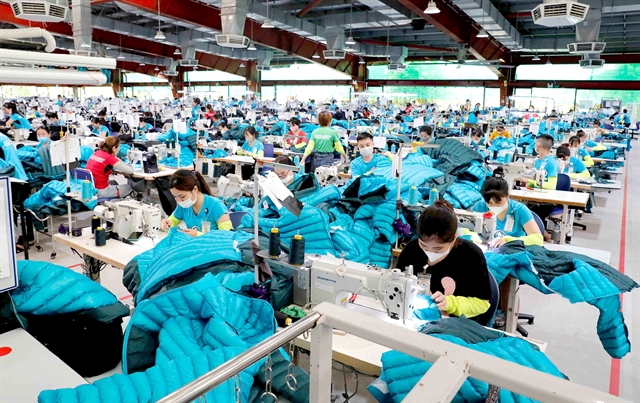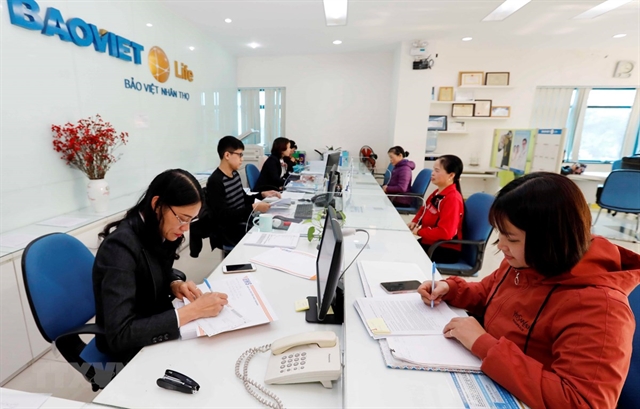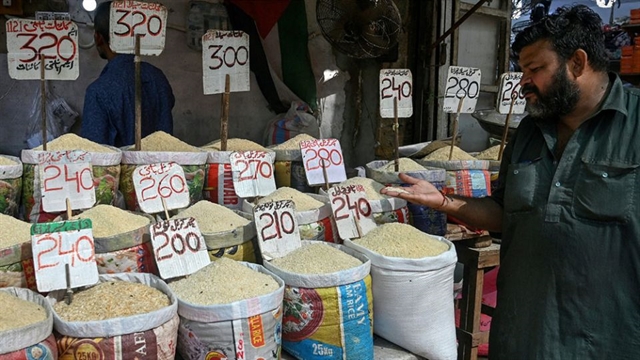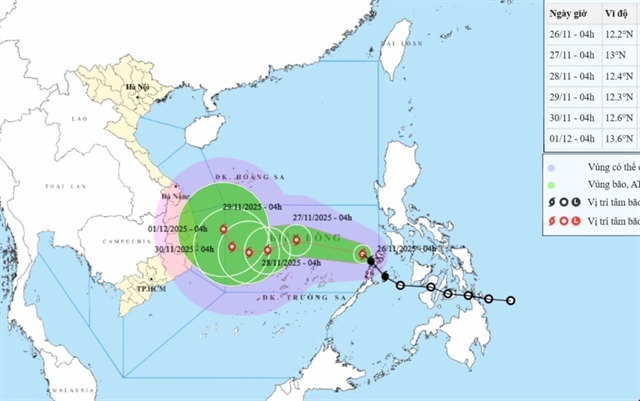 Business Beat
Business Beat


|
| Customers at a Bảo Việt Holdings’ office in the northern city of Hải Phòng. As the interest rate hike trend is forecast to remain in 2023, financial activities of insurance companies are expected to be continually positive this year. VNA/VNS Photo |
HÀ NỘI — Insurance companies will have the chance to earn higher profits in 2023 thanks to a continual interest rate hike trend.
It is feasible for insurers to continually increase profits this year as the majority of their investment portfolios are bank savings and government bonds, whose interest rates are forecast to remain at high levels in the year.
According to the current legal regulations, insurers have to use at least 70 per cent of their capital to deposit at banks or buy government bonds to ensure the insurers’ capital safety. Therefore, the current high interest rates of the two channels are an advantage for insurers to increase their profits.
As the interest rate hike trend is forecast to remain in 2023, financial activities of insurance companies are expected to continually record positive results this year.
The US Federal Reserve (Fed) last year raised interest rates by a total of 4.25-4.5 per cent per year to curb inflation, the highest rate since January 2008. Fed is expected to continue increasing interest rates in the first quarter of 2023.
The Fed’s interest rate hike caused the money flows to change. Investors have gradually withdrawn in most of the emerging and frontier countries and returned to the US. This pushed the US dollar Index to 104.2 points on December 27 last year, up by 8.6 per cent compared to the beginning of 2022.
Facing the pressure of local currency devaluation, as well as the withdrawal of investment flows, most countries have had to raise interest rates. Việt Nam is no exception, especially when the market is thirsty for capital with the credit growth increasing faster than the capital mobilisation growth. To cope with the difficulties, the State Bank of Vietnam (SBV) increased policy interest rates twice in September and October 2022, by 1 per cent per year each time.
Under the SBV’s move, the interest rates for 12-month term deposits at banks in 2022 increased by 2-4 per cent per year on average. For example, the 12-month interest rate at BIDV is currently 7.4 per cent per year from 5.5 per cent at the beginning of 2022. Similarly, the rate rose from 5 per cent to 9.1 per cent per year at VPBank, from 5.8 per cent to 8.9 per cent per year at Sacombank, from 5.5 per cent to 7.4 per cent per year at Vietcombank.
The savings interest rates are forecast to remain high or even increase higher in the next six months to 12 months.
As interest rates are high, borrowing costs are expensive, and economic growth is slowing. It is currently a tough time for most businesses. However, this is an opportunity for businesses, including insurance companies, which own a large amount of cash.
Statistics of seven listed insurance companies, including Bảo Việt Holdings (BVH), Bảo Minh Insurance Corporation (BMI), PetroVietnam Insurance Corporation (PVI), Vietnam Reinsurance Corporation (VNR), Post and Telecommunications Insurance Corporation (PTI), Petrolimex Insurance Company (PGI) and Military Insurance Corporation (MIG), showed by the end of the third quarter of 2022, the companies had more than VNĐ127.5 trillion in cash. The cash was short-term financial investments with mainly short-term bank savings, which accounted for some 42 per cent of the companies’ total assets.
As the short-term savings interest rates of banks have been consecutively adjusted up, especially at the end of September and October last year, the VNĐ127.5 trillion short-term financial investments of the insurers have earned significant profits.
According to experts, the financial revenue of insurers often depends on the interest rates of the market. When interest rates increased, the financial revenue of the insurers increases and vice versa.
Data from Viet Dragon Securities Company (VDSC) also showed interest rates tended to go up in the 2009-11 period. They then slowed in the 2011-15 period, and increased again since 2016.
The financial revenue of insurers was also under the same move in the periods. The financial revenue of three typical insurance companies, including BVH, BMI and PVI, also increased from 2009 to 2011, when the interest rates rose in the domestic market. In the period of interest rate decline in 2012-15, the financial revenue of the insurers slowed before increasing again in the 2017-19 period.
In fact, besides the insurance business segment, the financial revenue of insurance companies is often high compared to their total pre-tax profit. Specifically, at BVH, in the 2008-21 period, the insurer’s ratio of financial revenue to pre-tax profit averaged 339.7 per cent. The ratio at BMI and PVI was 102.5 per cent and 150.7 per cent, respectively.
According to Ngô Việt Trung, Director of the Ministry of Finance’s Insurance Supervision Administration, despite difficulties and challenges of the economy after the COVID-19 pandemic, insurance companies adapted proactively and flexibly, helping the country’s insurance market maintain a good growth rate in 2022.
As of December 12, 2022, insurance premiums in Việt Nam increased 15.1 per cent year-on-year to more than VNĐ251.3 trillion, of which VNĐ68.2 trillion was from non-life insurers and VNĐ183.10 trillion from life insurers.
By December 12, the total assets of insurance companies grew by 14.51 per cent against the beginning of the year to VNĐ811.31 trillion, while equity reached VNĐ162.81 trillion, up 3.83 per cent.
The numbers are positive in the current context, Trung noted, adding insurance companies have actively improved their competitiveness and expanded their operation area. — VNS




